Do You Know Your 'Slave Footprint'?
Do you know how many slaves have helped produce the products you use or consume? Are you up to speed with your 'modern slavery footprint'?
Most of us are familiar with the terms 'carbon footprint', 'sustainability', 'climate change'.
But are you up to speed with your 'modern slavery footprint'?
I attended a pretty mind-opening webinar recently on MODERN SLAVERY hosted by AIMA (the Australasian Integrative Medical Association) and The Blackmores Group Australia.
The purpose of the webinar was to bring more AWARENESS to the scale and consequences of modern slavery, with reference in particular to how the health and nutritional products we purchase track back to any slavery involved in their production.
Do you know how many slaves have helped produce the products you use or consume?
Modern slavery is a very real thing which many of us, particularly in the western world, are fairly oblivious to. We may have heard of child labour and human trafficking, but haven't really stopped to think about the enormity of how modern slavery is a reality for millions of people around the world, right now.
So just stop for a moment and let this sobering fact sink in:
Right now, over 40 million people are trapped in 'modern slavery' in the world.
40 million people.
More Slavery Now Than Ever
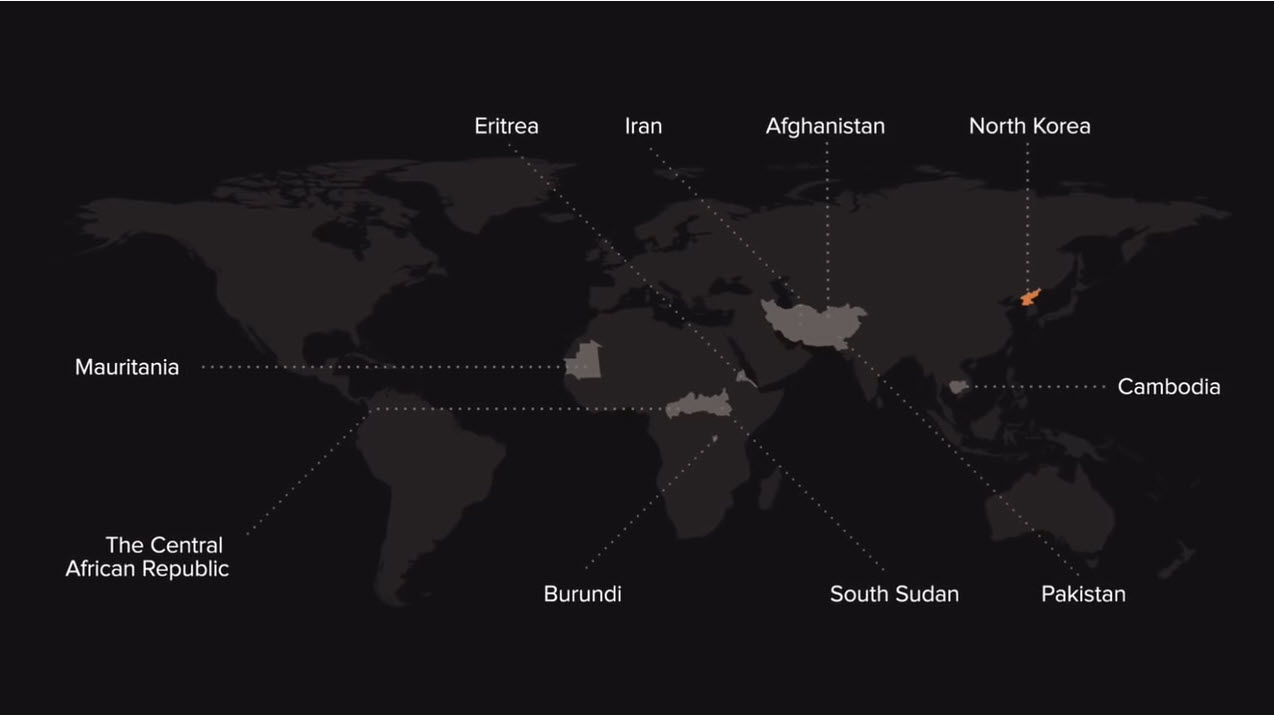
According to webinar host Michelle Fernandez, Ethical Sourcing Manager for the Blackmores Group, and an expert in this subject, there are more slaves than ever in the world today.
Most of us probably believe slavery died out a century or more ago, given our history of the USA, but this is not the case at all.
Many countries still have 'legalized slavery and shockingly there are over 40 million people in enslavement today on the planet.
- 150 million of these are children in child labour
- 50% are aged 5-11yrs
- 25% are children
- 71% are women and children
- People are being sold for as little as $90
- Human trafficking creates $150 billion a year
The countries with the highest prevalence of modern slavery are those with state-imposed forced labour. For example, 1 in 10 people in North Korea are in modern slavery, forced to work by the state*.
Definition of Slavery
On the website 'Slavery Footprint', where you can take a quiz to measure your personal slave footprint (ie how many slaves have been involved in the products and services you use) you will find examples of real-life slavery today such as:
- Bonded labor is used for much of Southeast Asia's shrimping industry, which supplies more shrimp to the U.S. than any other country. Laborers work up to 20-hour days to peel 40 pounds of shrimp. Those who attempt to escape are under constant threat of violence or sexual assault.
- Every day tens of thousands of American women buy makeup. Every day tens of thousands of Indian children mine mica, which is the little sparklies in the makeup.
- Rubies are believed to be Burma's second largest export after teak wood, and are commonly mined using forced labor. Mines are controlled by either the government or the army, who oversee workers in terrible conditions for little or no pay.
- Coltan is an effective capacitor found in electronics. A U.S. State Department official was interviewed about Coltan mining in the Democratic Republic of the Congo. He pointed to the reporter's smartphone and said, “The likelihood that one of these was not touched by a slave is pretty low.”
- In China, soccer ball manufacturers will work up to 21 hours in a day, for a month straight. Even the toughest American coaches wouldn't ask that from their squads.
- 1.4 million children have been forced to work in Uzbek cotton fields. There are fewer children in the entire New York City public school system.
A True Story of Modern Slavery
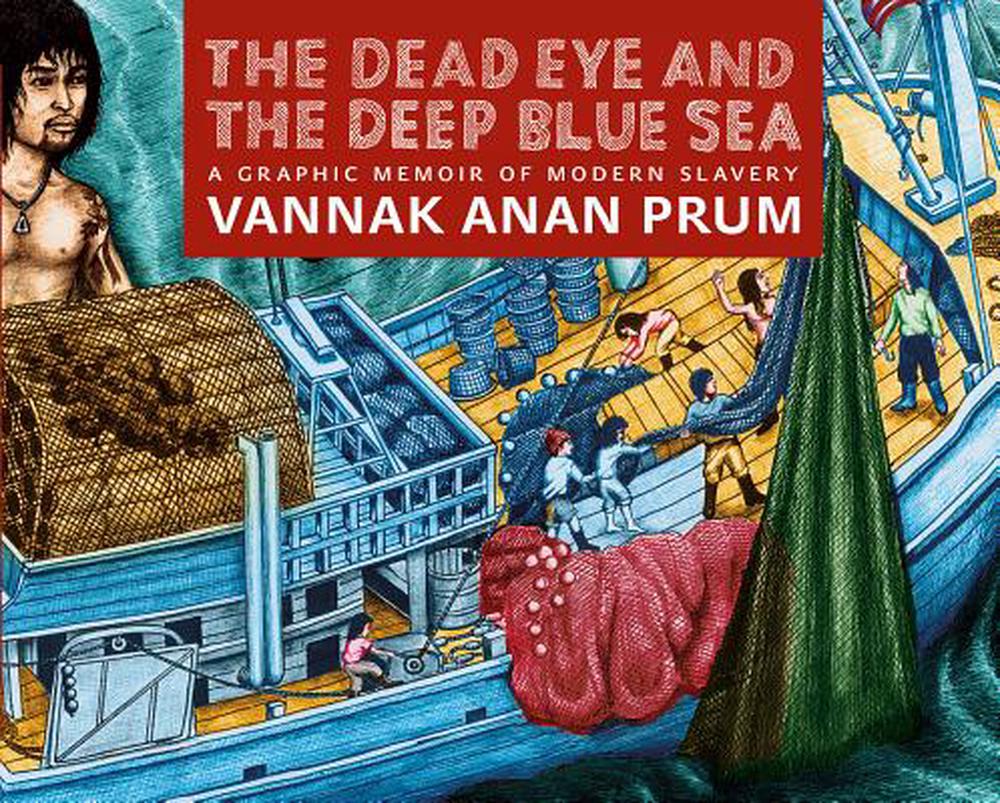
Here is a true story of just one of the 40 million people in enslavement, one who was lucky enough to get away:
Too poor to pay his pregnant wife's hospital bill, Vannak Anan Prum left his village in Cambodia to seek work in Thailand. Men who appeared to be employers on a fishing vessel promised to return him home after a few months at sea, but instead Vannak was hostaged on the vessel for four years of hard labor.
Amid violence and cruelty, including frequent beheadings, Vannak survived in large part by honing his ability to tattoo his shipmates--a skill he possessed despite never having been trained in art or having had access to art supplies while growing up.
As a means of escape, Vannak and a friend jumped into the water and, hugging empty fish-sauce containers because they could not swim, reached Malaysia in the dark of night. At the harbor, they were taken into a police station . . . then immediately sold by their rescuers to work on a plantation. Vannak was kept as a laborer for over a year before an NGO could secure his return to Cambodia. After five years away, Vannak was finally reunited with his family.
Vannak documented his ordeal in raw, colorful, detailed illustrations, first created because he believed that without them no one would believe his story. Indeed, very little is known about what happens to the men and boys who end up working on fishing boats in Asia, and these images are some of the first records. In regional Cambodia, many families still wait for men who have disappeared across the Thai border, and out to sea. His book 'the Dead Eye and the Deep Blue Sea' is a testament to the lives of these many fishermen who are trapped on boats in the Indian Ocean**.
The Global Slavery Index
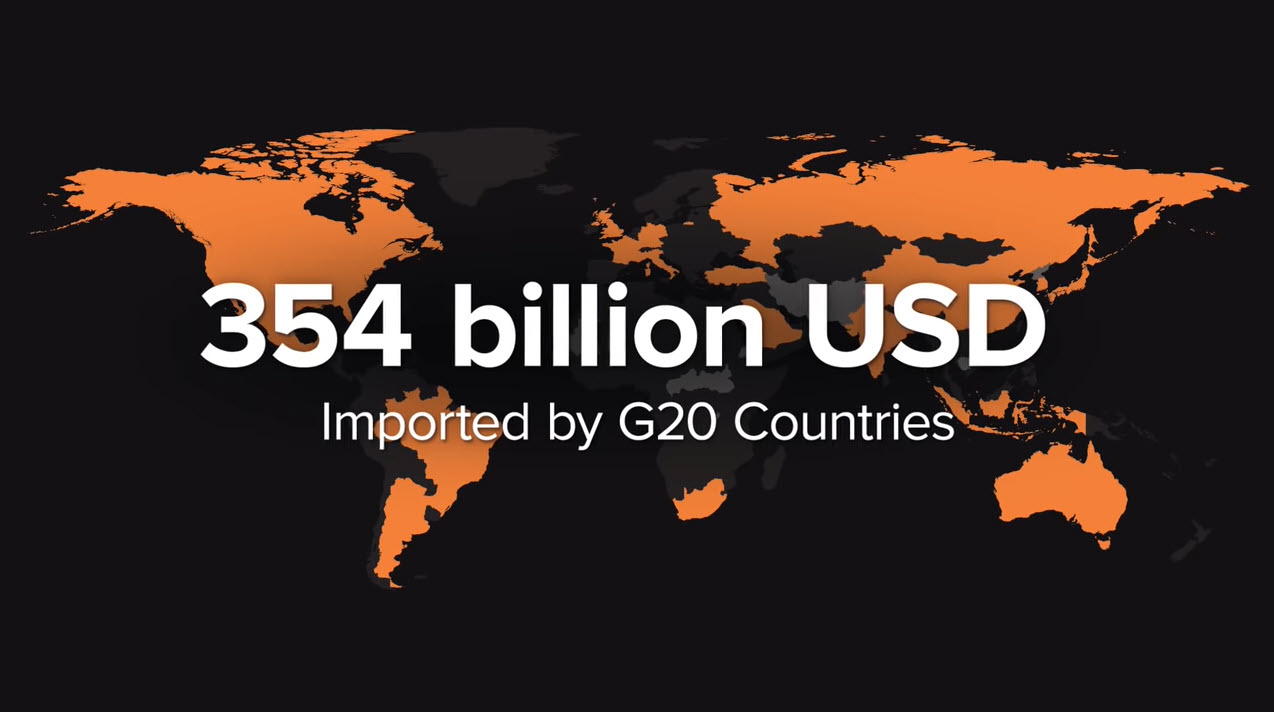
The 2018 'Global Slavery Index' is the largest study on modern slavery, with fresh figures due out in 2022.
Research has shown that the wealthy G20 countries in the world import $354 billion dollars of 'at risk' (produced by slaves) products each year.
Products such as clothes, food, tech products, construction materials, jewellery, toilettries, make up, cars, kitchen equipment, furniture... the list is extensive.
Just about anything in your house is likely to track back to a modern slave somewhere in the world who helped bring it to your doorstep.
The good news is, the modern slavery act of 2018 (which came into force on 01 Jan 2019), requires that companies with revenues exceeding $100 million must publicly track and report the sourcing of their product lines and supply chains.
(I have to ask myself, when I see the amount of junk sold on websites like Amazon, what does their sustainability report look like?)
How will you help end modern slavery?
The next time you step out to go to the shops, or online to make your next purchase, or build your next house, or buy your next car, computer or latest tech gadget, stop and ask yourself:
- Are you OK with supporting modern slavery to continue?
- Do you know if the products you are buying are ethically sourced?
- What are you going to do to change your buying habits which could help end modern slavery?
- What are you going to do to help end modern slavery
How the Art of Health is helping
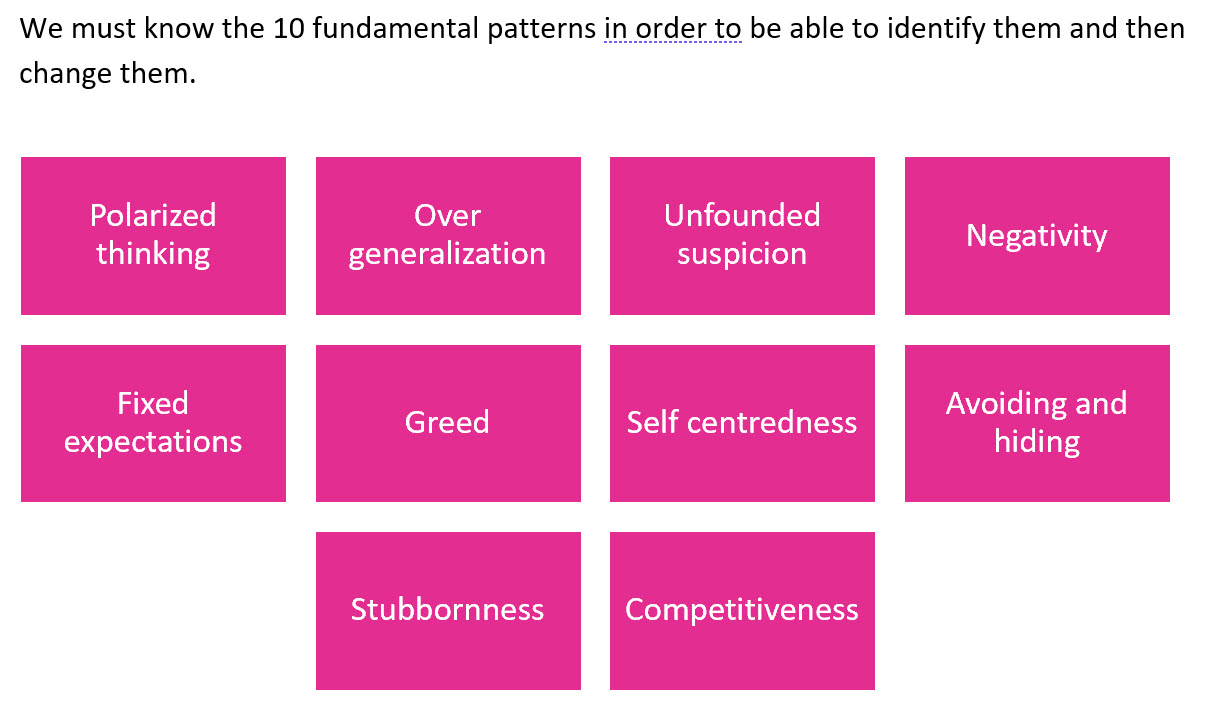
Apart from observing and curbing my own buying habits, as Michelle mentioned in her presentation, 'Awareness Drives Change'.
It has always been my motto (learned from one of my teachers) that 'Awareness is the key to healing: once we become aware of what we are unaware of, we have new choices'.
One of the primary goals at the Art of Health is to help people become more self-aware and change unhealthy damaging habits into healthier beneficial habits, with the purpose of improving health and wellbeing, and reversing symptoms of illness.
One of the main approaches to positive change offered by the Art of Health is to help clients dissolve and transform their 'unhealthy patterns of consciousness', because it is these patterns which unconsciously drive our ignorant behaviours: patterns such as greed, selfishness, competitiveness, self-centredness and more.
The crux of the matter is, these patterns drive our every thought, feeling and behaviour, leading us to behave the way we do, including our purchasing choices, how we treat ourselves and each other, how we treat the planet, nature, animals... Everything is driven at a fundamental level by our unhealthy or healthy patterns, leading to either damaging or beneficial results, and it's up to each one of us to transform our unhealthy patterns.
The reality is, these unhealthy habits extend to everything we do in life.
The reason our world finds is in such dire crisis right now is due to the actions and behaviour of humananity on ourselves, nature and the environment. We have, quite simply put, been acting out of unhealthy patterns of ignorance.
When we change our unhealthy patterns, everything changes for the better: our health, our wellbeing, our actions, our behaviours, our relationships with ourselves, others, the world. This change is critical right now, and is key to transforming our world.
You can check out the 'Tong Yuan' heart consciousness and 'Ling Yuan' patterns of consciousness trainings on my Tao Health Qigong website.
Take the Slave Footprint Test
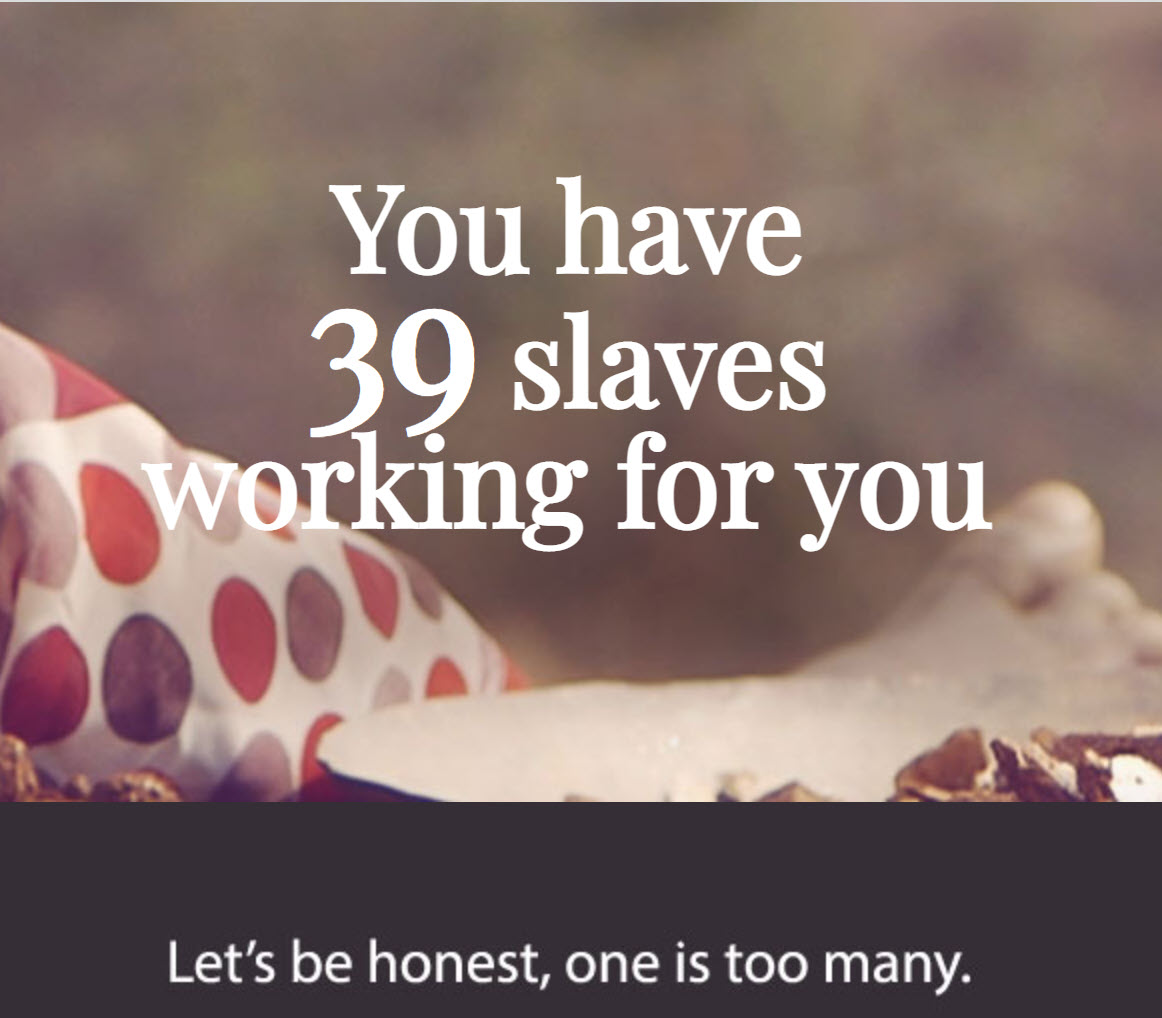
How many slaves do you have working for you as a result of your consumer choices and buying habits?
Go to http://slaveryfootprint.org/ you can work out how many slaves are connected with the products you own or have purchased.

